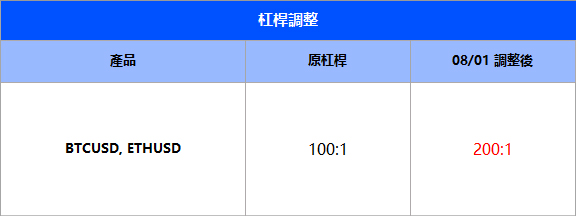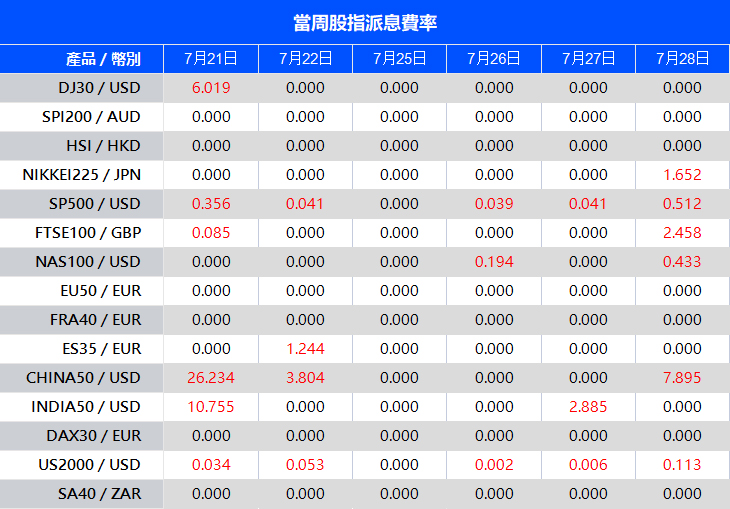Tuesday’s decline in US stocks was precipitated by deteriorating economic conditions, worries of a recession, and sky-high inflation. The dismal outlook of the world’s largest retailer, Walmart Inc., illustrates the effects of inflationary pressures on consumer spending. Concerns over a faltering global economy prompted investors to anticipate another 75-basis-point increase before to a widely anticipated Federal Reserve interest rate hike, with the total 150-bps interest rate spike in June and July reaching the highest level since the early 1980s.
Alphabet Inc., the parent company of Google, and Texas Instruments Inc. rose after earnings, but Microsoft fell due to its slowest revenue growth since 2020. In addition, the sales of McDonald’s Corp. and Coca-Cola Co. exceed expectations, and Coinbase Global Inc. is under investigation in the United States for allegedly allowing Americans to trade digital assets that should have been registered as securities, according to three individuals familiar with the situation.

The S&P 500 and Dow Jones Industrial Average both dipped on Tuesday as a result of the Fed’s threat to raise interest rates on Wednesday, recession fears, and disappointing earnings reports. The S&P 500 plummeted 1.19% daily, while the Dow Jones Industrial Average declined 0.7%. Eight of eleven sectors remained in the red, with Consumer Discretion and Communication Services having the worst performance of all categories, falling 3.38% and 2.20%, respectively. In the meantime, the Nasdaq 100 sank 2% on Tuesday, while the MSCI world index declined 0.9%.

Main Pairs Movement
As yesterday’s financial markets were dominated by aversion to risk, the US dollar rose on Tuesday, surrounded by bullish momentum, and approached the 107.30 level. During the first part of the trading day, the DXY index fluctuated in a range between 106.2 and 106.5. It then began to experience considerable purchasing pressure and reached a day high of over 107.2 during the US trading session. Escalating fears of economic slowdown in the Eurozone and the Russia-related energy crisis continued to boost demand for the safe-haven dollar, as the Russian gas giant Gazprom is supplying roughly 20% of its normal natural gas supply. The market’s attention will now move to the Fed’s monetary policy statements.
The GBP/USD exchange rate declined by 0.12% on Tuesday as the US dollar strengthened across the board. Investors continue to be anxious about the possibility of a worldwide recession, which has eclipsed the likelihood of a 50 basis point (bps) rate hike by the Bank of England in August. In the late European session, the GBP/USD pair plummeted to a daily low below the 1.197 level before regaining upward momentum to recover the majority of its daily losses. In the meantime, EUR/USD sustained significant losses yesterday and retested its daily low near 1.010 throughout the US trading session. EU nations also agreed to limit gas consumption during the upcoming winter. The pair fell over 1% for the day.
As investors await additional direction from the Federal Reserve’s monetary policy meeting, gold was little changed with a 0.10% loss for the day after moving sideways in a narrow range below $1719 in the late US trading session. The White House stated on Tuesday that it would sell 20 million barrels from the Strategic Petroleum Reserve, causing WTI oil prices to drop to around $95 per barrel.
Technical Analysis
XAUUSD(4-Hour Chart)

Gold does a little technical progress, consolidating around 1722.66 on Tuesday. From the technical perspective, the four-hour outlook is neutral-to-bearish. Gold has fallen below the midline of the Bollinger Band and the 20 Simple Moving Average, suggesting that bears are in the driver’s seat. Failure to maintain above the resistance level of 1722.66 would bring the pair toward the next support of 1680.99. On the flip side, if gold can move upward above the midline, then the bullish momentum might be able to gain traction on the four-hour chart. The RSI indicator still trades around the midline, reflecting the absence of directional strength. Further price action eyes on the FOMC meeting.
Resistance: 1722, 1748, 1769
Support: 1680.99
USDJPY (4-Hour Chart)

USDJPY surpasses 136.00 as the US dollar regains positive traction on Tuesday ahead of the FOMC meeting. Technically speaking, USDJPY performs a meaningful rebound after hitting the lower band of the ascending channel. USDJPY has breached the psychological resistance of 136.00, suggesting that USDJPY resumes its bid mood. USDJPY attracts some buyers near 136.00, thus the RSI indicator has a skewed upside. The pair is expected to move further north as the RSI has way far from overbought, implying that there are rooms for the pair to ascend. On the flip side, if the pair falls below the bullish channel, then it will lose some positive momentum in the near- term
Resistance: 136.62, 137.06, 137.61
Support: 136.84, 134.75
EURUSD (4-Hour Chart)

EURUSD tumbles towards 1.0100 amid the European gas crisis and fears of a global recession. From the technical perspective, EURUSD is trading at its lowest in a week near the support level of 1.0109. The outlook of the currency pair turns downside as the bearish double-top trading pattern has been formed. In the meantime, the four-hour chart favours a downside extension as EURUSD has breached below the 20 Simple Moving Average. Failure to maintain above 1.0109 would confirm another downside momentum. Moreover, technical indicators, both the RSI and the MACD gain downward traction, trading within the negative regions.
Resistance: 1.0205, 1.0284, 1.0362
Support: 1.0109, 0.9952
Economic Data
| Currency | Data | Time (GMT + 8) | Forecast |
| AUD | CPI (QoQ) (Q2) | 09:30 | 1.9% |
| USD | Core Durable Goods Orders (MoM) (Jun) | 20:30 | 0.25 |
| USD | Pending Home Sales (MoM) (Jun) | 22:00 | -1.5% |
| USD | Crude Oil Inventories | 22:30 | -1.121M |





































